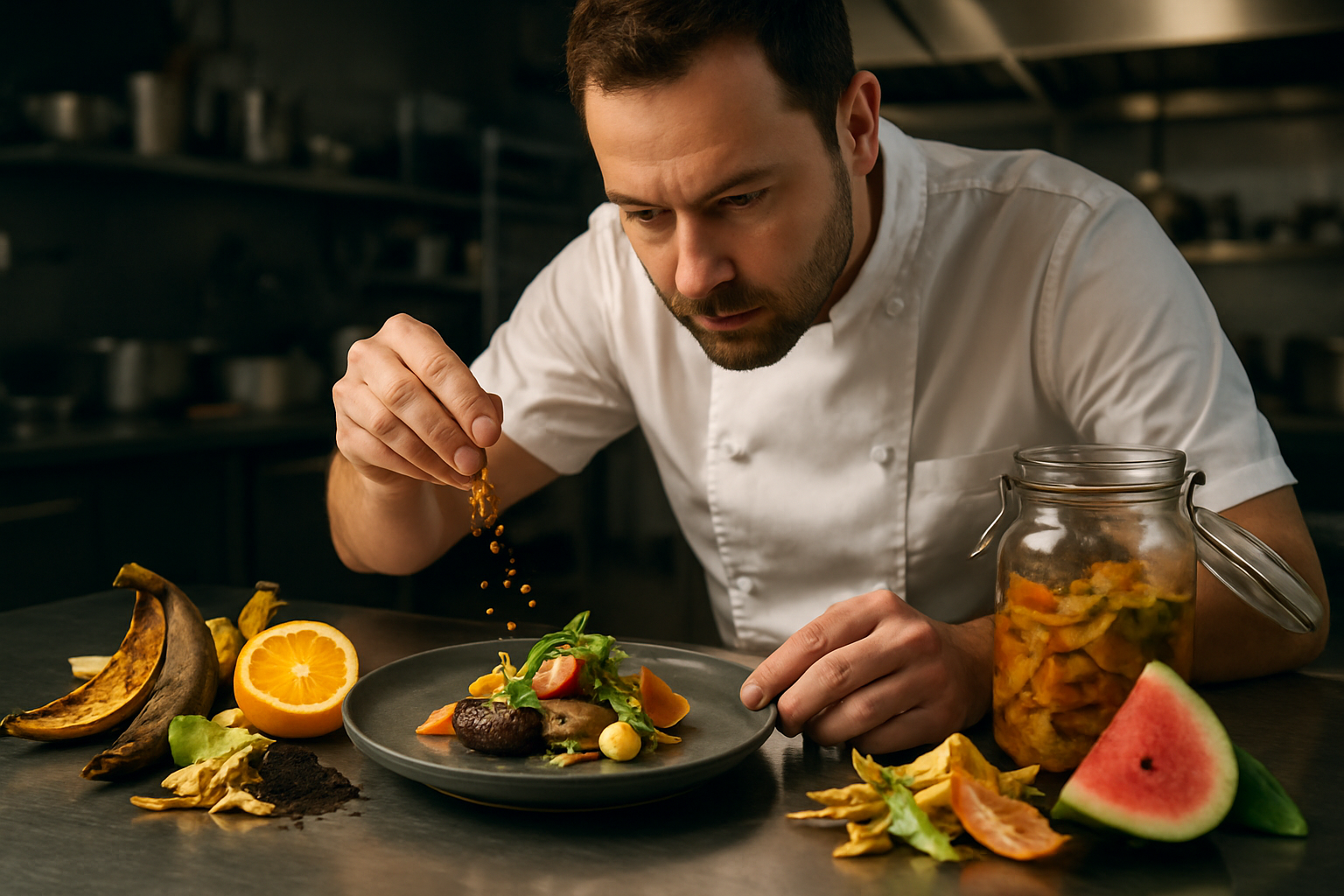Culinary Alchemy: Transforming Waste into Gourmet Delights
Revolutionizing kitchens worldwide, a new culinary movement is turning food waste into delectable dishes. Chefs and home cooks alike are embracing this eco-friendly approach, transforming scraps and leftovers into gourmet creations. From carrot top pesto to banana peel bacon, these innovative recipes not only reduce waste but also introduce exciting new flavors and textures to our plates.

Fruit Peels: From Trash to Treasure
Fruit peels, often destined for the compost bin, are finding new life in creative culinary applications. Citrus peels, rich in essential oils and flavor, are being candied, zested, or infused into syrups and spirits. Watermelon rinds, typically discarded, are pickled to create a tangy condiment reminiscent of cucumber pickles. Even banana peels are being transformed into vegan “bacon” by marinating and baking them until crispy, offering a plant-based alternative with a surprisingly meaty texture.
Aquafaba: The Magic of Bean Water
Aquafaba, the liquid from canned chickpeas or other legumes, has emerged as a versatile egg substitute in vegan cooking. This previously discarded liquid can be whipped into meringues, used as a binder in baked goods, or even transformed into vegan mayonnaise. Its unique properties allow it to mimic the structure and texture of egg whites, opening up a world of possibilities for plant-based cooking and reducing waste in the process.
Upcycling Coffee Grounds
Coffee grounds, a daily waste product in many households, are finding new purpose beyond the compost pile. Innovative chefs are incorporating them into rubs for meats, adding depth to chocolate desserts, or using them as a base for exfoliating body scrubs. Some enterprising individuals are even growing mushrooms on spent coffee grounds, creating a sustainable cycle of food production from what was once considered waste.
Fermentation: Preserving and Enhancing Flavors
Fermentation is experiencing a renaissance as a method to preserve excess produce and create new, complex flavors. Vegetable scraps like carrot tops, beet greens, and radish leaves can be fermented into kimchi or sauerkraut, adding probiotic benefits and extending their shelf life. Fruit scraps and peels can be transformed into vinegars or kombucha, offering tangy and refreshing drinks while reducing waste.
Useful Tips & Facts
-
Store vegetable scraps in the freezer to make flavorful stocks and broths
-
Use overripe fruits in smoothies or baked goods for natural sweetness
-
Blend herb stems into pesto or chimichurri sauces
-
Infuse vinegar with fruit peels for homemade cleaning solutions
-
Dry citrus peels to use as natural air fresheners or tea additives
Conclusion
The culinary world is embracing a new era of creativity and sustainability by transforming food waste into gourmet delights. This movement not only reduces environmental impact but also challenges chefs and home cooks to think outside the box, resulting in innovative and delicious dishes. As we continue to explore the untapped potential of discarded food parts, we’re not just reducing waste – we’re expanding our culinary horizons and discovering new flavors that have been hiding in plain sight all along.





